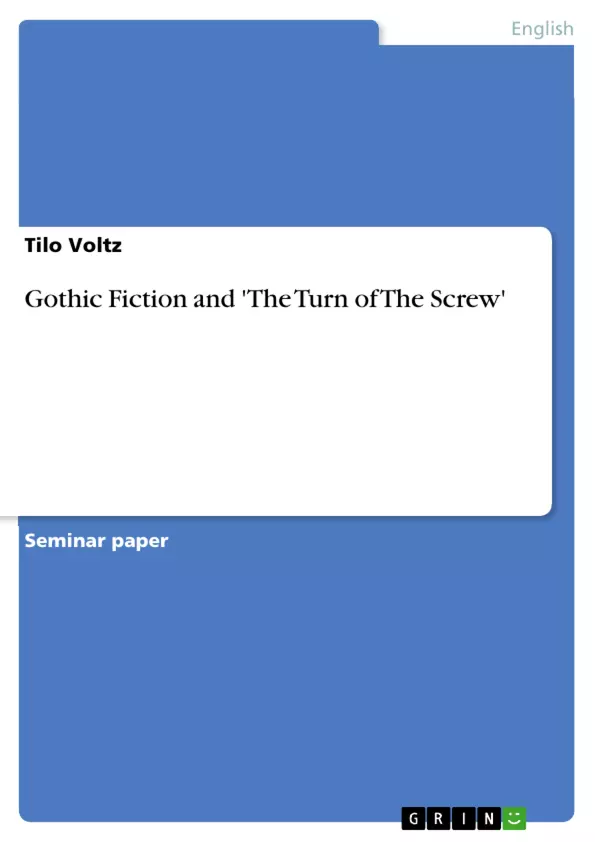Die Arbeit beleuchtet zunächst den ethymologischen und historischen Hintergrund des Terminus Gothic, um anschließend auf drei mögliche Ursachen der Entstehung von Gothic Fiction im 18 Jahrhundert einzugehen. Anschließend werden drei wichtige Merkmale der Gothic Fiction in Henry James' The Turn of The Screw aufgezeigt und knapp diskutiert.
Table of Contents
- Introduction
- What is Gothic Fiction?
- Gothic as a Term
- Etymological Origin
- Historical Origin
- Historical Development
- Gothic as a Style in Literature
- Horror Gothic and Terror Gothic
- Reasons for the Development of Gothic Fiction in the Mid 18th century
- Aspect 1: Gothic Setting
- Aspect 2: Gothic Characters and Personnel
- Aspect 3: Gothic Essentials
- The Turn of the Screw - Gothic Fiction?
- Basic Elements of Gothic Fiction in The Turn of the Screw
- Results
Objectives and Key Themes
This paper examines the tradition of Gothic fiction and its presence in Henry James's The Turn of the Screw. The main objective is to determine whether James's novella can be classified as Gothic fiction. This is achieved by first defining Gothic fiction through its historical development and stylistic characteristics, then identifying key Gothic elements within The Turn of the Screw.
- The historical development and evolving definition of Gothic fiction.
- The stylistic characteristics of Gothic literature, including its subgenres (Terror Gothic and Horror Gothic).
- The identification of key Gothic elements in Henry James's The Turn of the Screw.
- The exploration of the relationship between the Gothic tradition and modern literature.
- An analysis of how the Gothic genre has adapted and evolved over time.
Chapter Summaries
Introduction: This chapter introduces the paper's central question: Is Henry James's The Turn of the Screw Gothic fiction? It outlines the approach taken to answer this question, which involves a three-step process: defining Gothic fiction, exploring its development, and analyzing The Turn of the Screw for Gothic elements.
What is Gothic Fiction?: This section delves into the origins and evolution of the term "Gothic," tracing its etymology and historical usage. It differentiates between Terror Gothic and Horror Gothic, highlighting their key characteristics. It also explores the reasons for the rise of Gothic fiction in the mid-18th century.
The Turn of the Screw - Gothic Fiction?: This section, though incomplete in the provided text, is intended to analyze The Turn of the Screw to determine if it contains the key elements of Gothic fiction as previously defined. It would likely examine aspects of the novella's setting, characters, and plot for Gothic tropes.
Keywords
Gothic fiction, Gothic revival, Terror Gothic, Horror Gothic, Henry James, The Turn of the Screw, literary genre, historical development, literary analysis.
- Quote paper
- Tilo Voltz (Author), 2008, Gothic Fiction and 'The Turn of The Screw', Munich, GRIN Verlag, https://www.grin.com/document/119706



